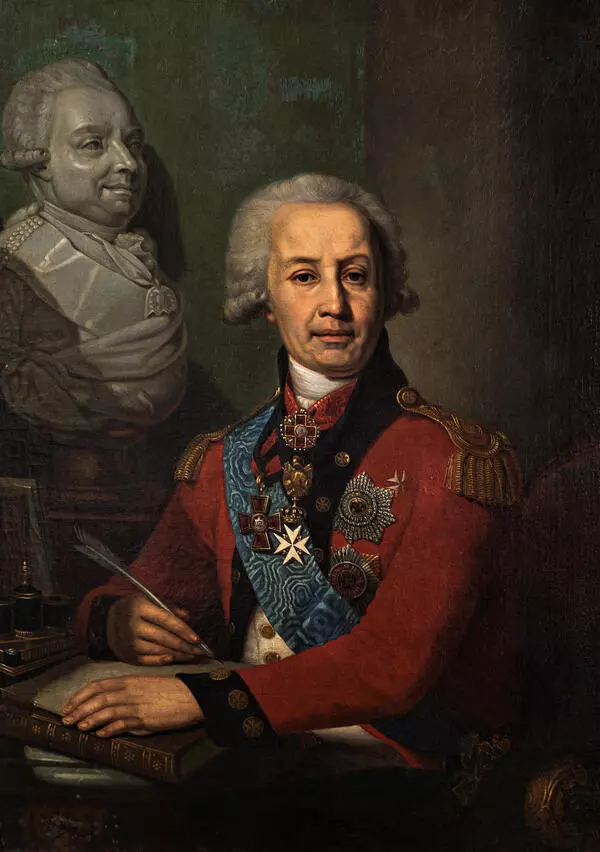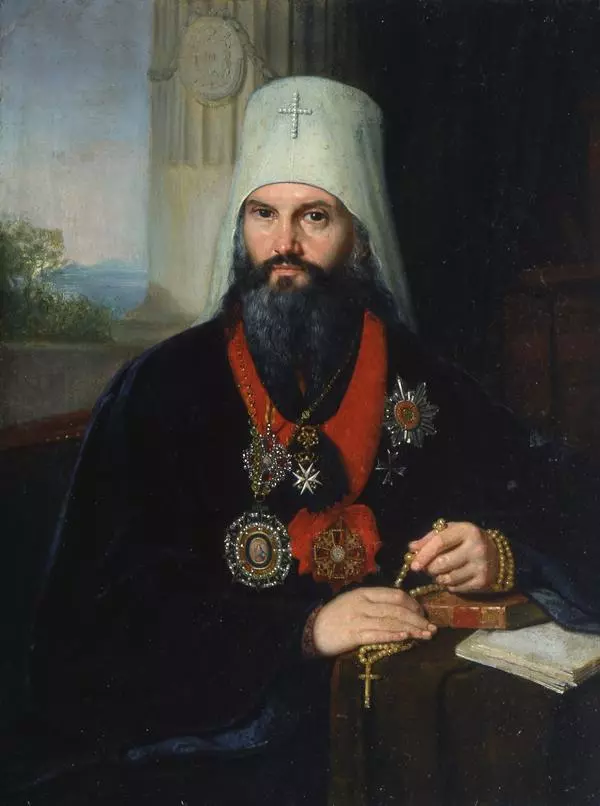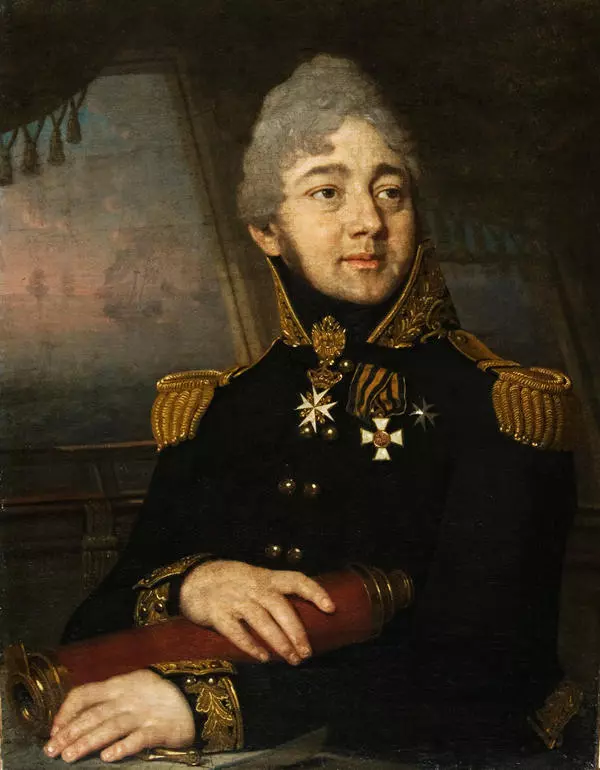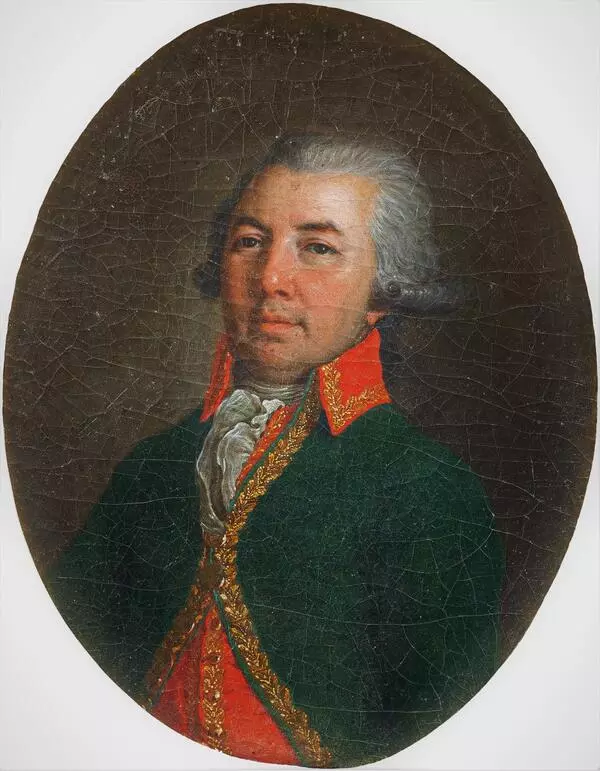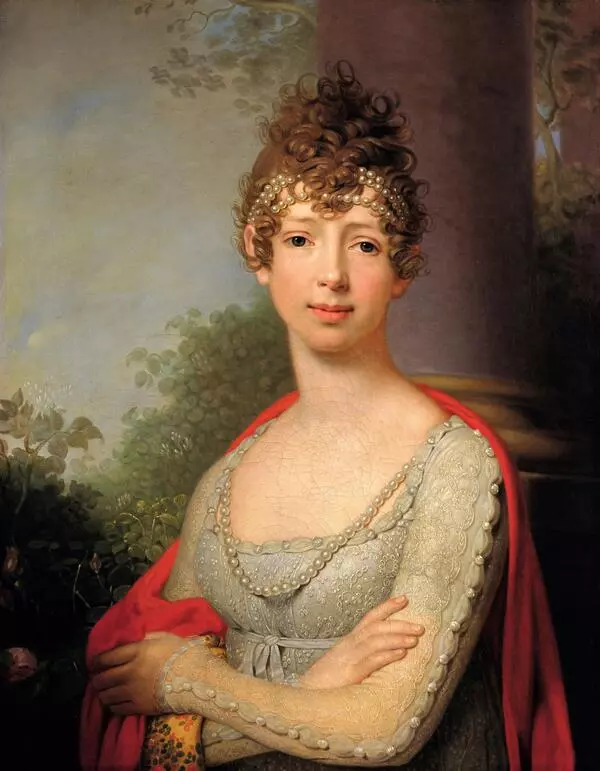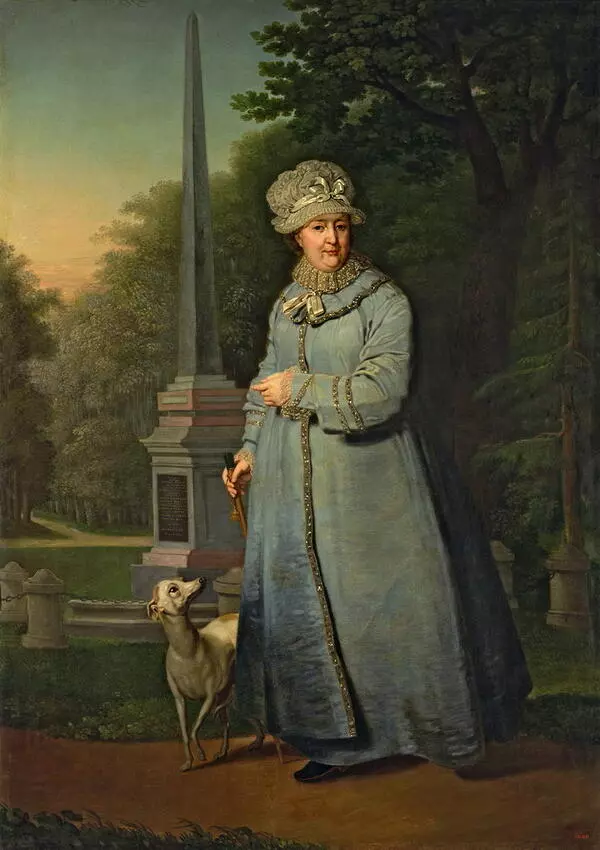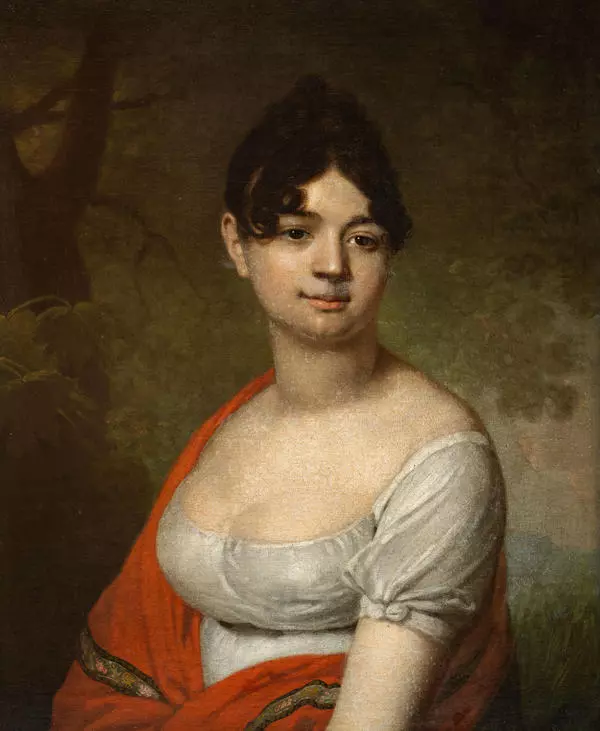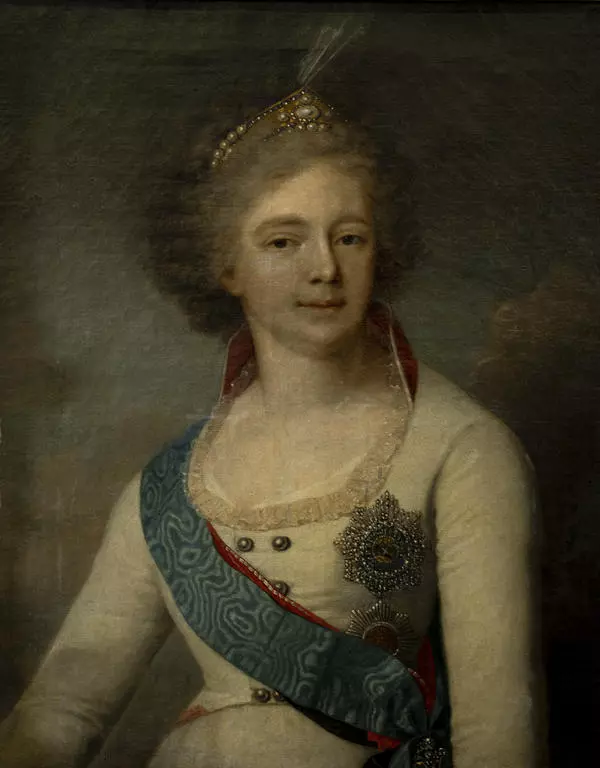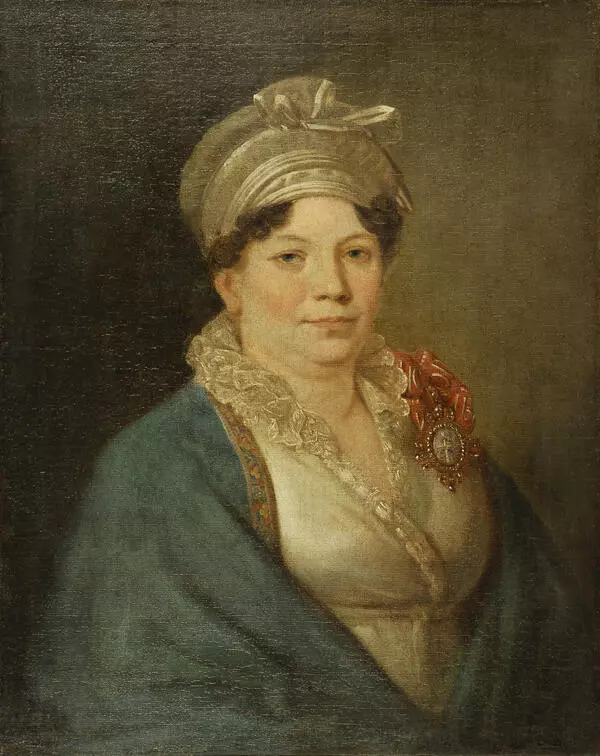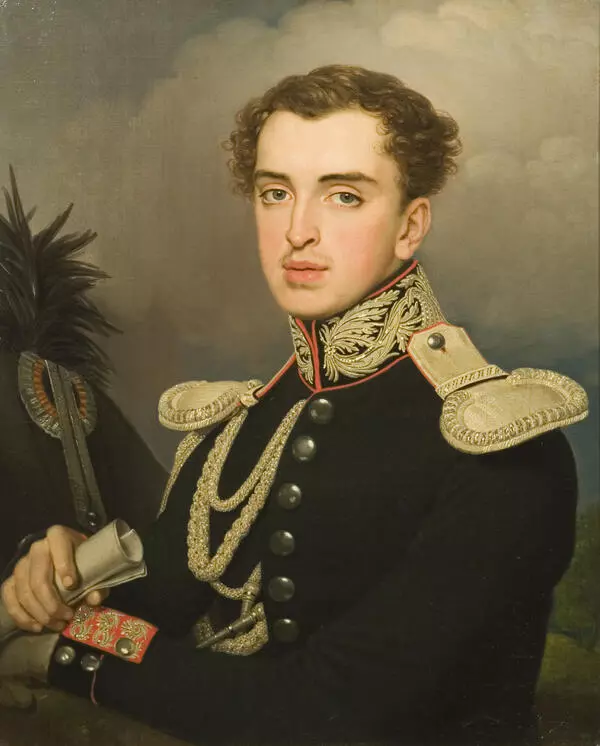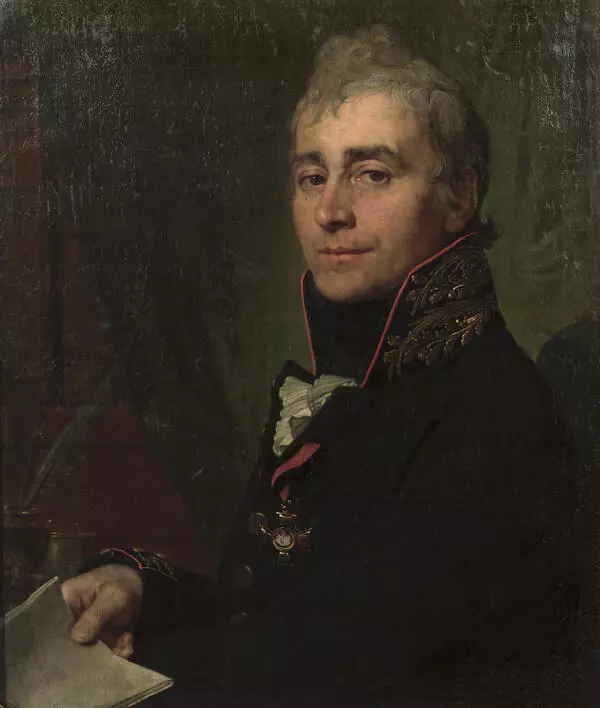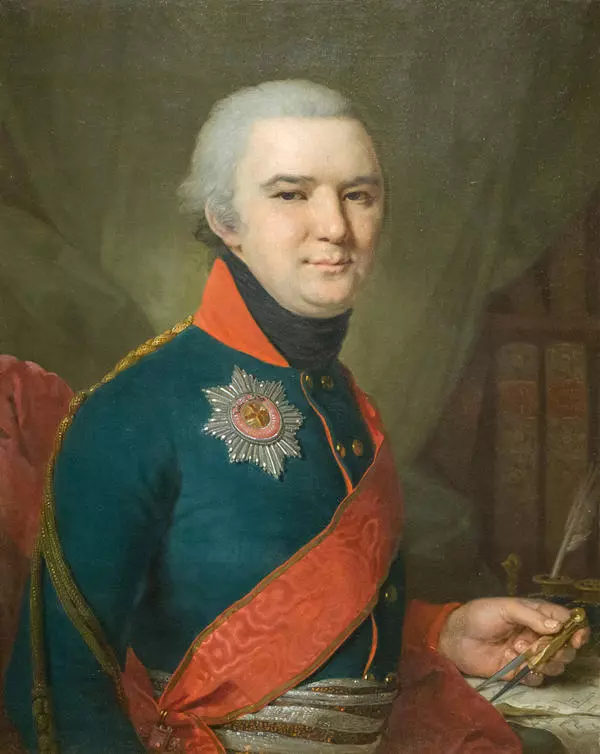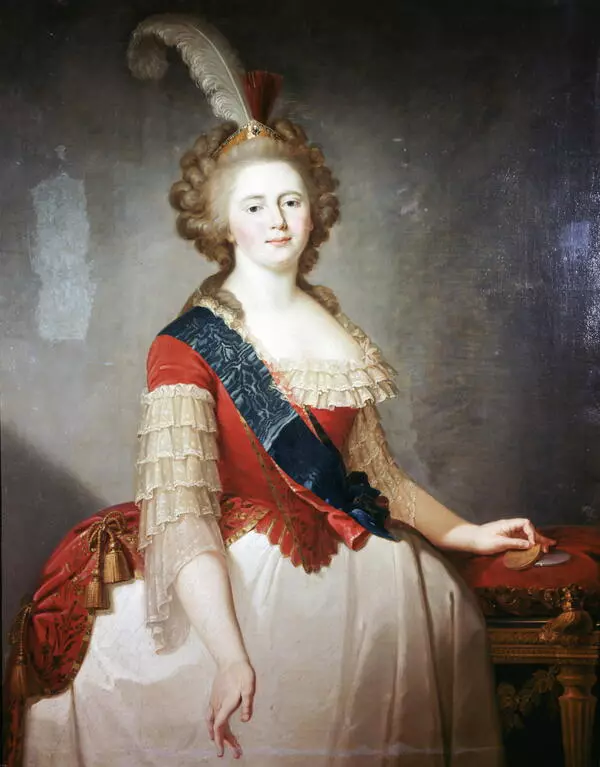The great hall of the Volsk museum gallery houses a portrait of Countess Varvara Vasilyeva, a Court Dame of the Order of St. Catherine, wife of Count Alexey Vasilyev, a major financier and the first Minister of Finance of the Russian Empire.
Such Dames were women who, for their services, were granted the order of St. Catherine of the Small, or Cavalier, Cross. Such award was given to women of the nobility or wives of distinguished officials and military men. The Grand Cross was awarded to persons of royal blood and the highest ladies of the court. The statute of the order did not specify particular services for which it was awarded, but most often, it was granted for educational and charitable activities. Among other things, it was the duty of the awarded ladies to ransom a Christian who had been captured by barbarians.
In the early 19th century, the famous painter Vladimir Borovikovsky was commissioned to paint the portraits of Count Alexey Vasilyev and his family. He painted the count himself, repeating an earlier portrait he had made in the late 18th century, and portrayed his wife and two daughters, Catherine and Maria.
Varvara Vasilyeva was born in 1751. Her father was Prince Sergey Urusov, and her mother was Irina Urusova, born Princess Drutskaya, the poet Mikhail Kheraskov’s aunt. In the late 1770s, Varvara Sergeevna married Alexey Vasilyev, the protégé of the Procurator-General Alexander Vyazemsky. This marriage helped Vasilyev to strengthen his position in society and to emerge from the petty nobility.
In 1781, the Vasilyevs had a daughter Catherine, and in 1784 — Maria. The former subsequently married Infantry General Prince Sergey Dolgoruky, and the latter married Count Vasily Orlov-Denisov, a cavalry general.
In 1799, Emperor Paul I bestowed Baroness Varvara Vasilyeva the Dame of the Order of St. Catherine of the Small Cross.
On 15 August 1807, Countess Vasilyeva was widowed, and the imperial decree of Emperor Alexander I of 18 August was commanded to “pay to her for life her full salary and her husband”s salary.’ The last years of her life Countess Vasilyeva spent in Moscow. She died on September 15, 1831, and was buried in the Donskoy monastery.
Such Dames were women who, for their services, were granted the order of St. Catherine of the Small, or Cavalier, Cross. Such award was given to women of the nobility or wives of distinguished officials and military men. The Grand Cross was awarded to persons of royal blood and the highest ladies of the court. The statute of the order did not specify particular services for which it was awarded, but most often, it was granted for educational and charitable activities. Among other things, it was the duty of the awarded ladies to ransom a Christian who had been captured by barbarians.
In the early 19th century, the famous painter Vladimir Borovikovsky was commissioned to paint the portraits of Count Alexey Vasilyev and his family. He painted the count himself, repeating an earlier portrait he had made in the late 18th century, and portrayed his wife and two daughters, Catherine and Maria.
Varvara Vasilyeva was born in 1751. Her father was Prince Sergey Urusov, and her mother was Irina Urusova, born Princess Drutskaya, the poet Mikhail Kheraskov’s aunt. In the late 1770s, Varvara Sergeevna married Alexey Vasilyev, the protégé of the Procurator-General Alexander Vyazemsky. This marriage helped Vasilyev to strengthen his position in society and to emerge from the petty nobility.
In 1781, the Vasilyevs had a daughter Catherine, and in 1784 — Maria. The former subsequently married Infantry General Prince Sergey Dolgoruky, and the latter married Count Vasily Orlov-Denisov, a cavalry general.
In 1799, Emperor Paul I bestowed Baroness Varvara Vasilyeva the Dame of the Order of St. Catherine of the Small Cross.
On 15 August 1807, Countess Vasilyeva was widowed, and the imperial decree of Emperor Alexander I of 18 August was commanded to “pay to her for life her full salary and her husband”s salary.’ The last years of her life Countess Vasilyeva spent in Moscow. She died on September 15, 1831, and was buried in the Donskoy monastery.




